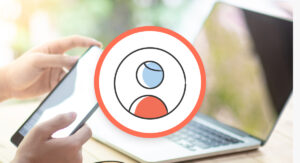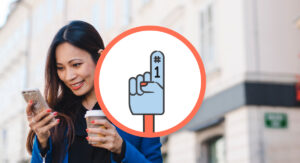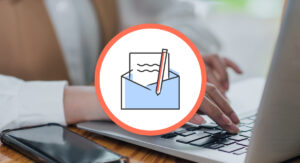How to optimize your email list segmentation for conversions
For any email marketer chasing conversions, there are several popular tools ready at your disposal.
These tools could also be thought of as strategies. Not only do they allow people to approach email marketing in a different manner, they provide avenues for them to reach their subscribers in special ways.
One such example is list segmentation. List segmentation tools are common in most major email platforms, and for good reason. The strategy of segmenting your email list makes it easier to send the right content to the right people.
A personalized, audience-focused approach to email marketing is the best way to drive conversions. The data proves it. In this post, we’ll show off these numbers and explore exactly why segmentation works so well to drive conversions.
We’ll also provide some tips on how to approach list segmentation in a way that drives up those key metrics.
A brief overview of email list segmentation and conversion rates.
List building and segmentation go together like Simon and Garfunkel. To construct a list of subscribers who you can keep engaged, it requires an understanding of what those subscribers want.
As your email list grows, it becomes more important to divide it into different groups. The process of segmentation is great for anyone who wants more precision in their email marketing. When you know more about who you are sending content to, it becomes easier to strategically optimize that content accordingly.
And what about conversions? Admittedly, there are different interpretations of this term. However, the most common definition equates conversion to the act of helping a viewer, subscriber, or lead make the transition to a paying customer.
Why does segmentation work for driving conversions?
When we think about how to help a prospect become a customer, the answer is clear—there is no one right answer.
The scope of marketing and sales is a testament to this. So many strategies, approaches, tools, and tactics exist because buyers are diverse. Their needs are unique. Each situation is a new puzzle to solve. If this weren’t the case, there would be no challenge in converting sales.
The challenge lies in delivering a personal experience to each potential buyer. Show them how the good or service you offer can help solve a problem they have. The content you’re offering must be relevant to them.
Relevancy from segmentation can boost sales by 760%.
If you’re addressing customers by segments, you’re making sure your content is targeted. You’re not sending someone something that will be irrelevant to their situation. As a result, you’re not wasting any of your efforts.
The stats don’t just come from the senders’ side, either. One study showed that 78% of internet users said personalized content increased their purchasing intent. When people feel like the content they receive is from someone who understands them, it pushes them that much closer to conversion.
If you’re worried that the importance of personalization means there’s no room to fill in, don’t fret. A study from Infosys said that 31% of surveyed shoppers wished their buying experience was more personalized than it already is.
When you’re looking to convert people to customers, there’s no question that personalization and relevance are the keys. Since the easiest ways to achieve these goals is to segment your list, the question many marketers have is how to do it effectively.
When you’re addressing customers in segments, you’re closer to delivering personalized content. This could be anything from addressing a person at a certain stage of the customer lifecycle to targeting someone based on his or her age group.
How can you segment your email list?
Segmentation can come in many forms. When you have a list of hundreds, thousands, or even millions of subscribers, you can divide them up by a variety of criteria.
It isn’t uncommon for large-scale email marketers to have a number of different segmentation practices in their toolkit. When you learn to look at your email list in different ways, you may find it’s easier to discover new opportunities and ways to drive up those conversion rates quicker.
The graphic below shows just how many personalization options there are—and how each one ranks in terms of popularity among marketers.
Source: Delivra
Let’s examine the top six categories and how they can be used to segment an email list—and why they’re worth using.-
Location: This one is popular for local marketers especially. Location-specific deals are great for helping those single or limited-number locations stay competitive with regional chains. They’re also good for promoting products or services where the area is a factor—such as a skiing organization promoting deals in areas that receive heavy snowfall.
-
Transaction history: If people have already made a purchase, you may want to reconvert them. This could involve upselling them to another product, or even getting them to sign-up for a subscription service. If you segment your list by those who’ve already purchased, you automatically know who to offer special deals to as a reward for previous business.
-
Demographics: Though some people shy away from segmenting their list based on age or gender, it can actually be a good idea in some cases. This is especially true if you are selling a specific product that is relevant to one of these demographics—like a woman’s nightgown or a kid-sized pair of soccer shoes.
-
Historical data: Even if you haven’t converted a customer, you can still look at other stats as a sign of progress. Repeated clicks and long-term engagement mean there’s more of an opportunity there in the future.
-
Lifecycle position: It’s beneficial to divide your list up into newcomers, leads, previous customers, and other similar groups. Individuals in each group may require different types of content to help them progress to the next step in the cycle.
-
Web browsing history: If you can tell which of your website pages have gotten the most traffic, you can use that data to create personalized emails. Let’s say you run a three-tiered product subscription, and you see a lot of click-through activity from emails leading readers to the second tier. If they spend a lot of time on that page, you can send them a follow-up email with more information on the tier or even success stories of previous buyers. If you’re worried about customers being upset their personal data is used to deliver targeted emails, don’t—Salesforce data shows 57% of consumers don’t mind.
As you can see, segmentation can come in many forms. Within each of these segments, there are obvious opportunities for conversions. You can convert people easier when you can address them in a way that is relevant.
The next question you may have is how exactly to go about creating conversion-optimized content after you complete the segmentation process.
List building strategies to drive conversions among segments.
You know how to build segments, so the next step is delivering content that will drive conversion rates.
Just sending personalized content alone isn’t enough. You have to have the right approach, which encompasses design, copy, and calls-to-action (CTA). Let’s start with the first one. When you’re designing an email, consider ways to use color schemes that convey the message you’re going for.
Source: Emma
As for the copywriting style, try to use power words. Always include specifics, this empowers your personalized approach. Don’t forget to use numbers if possible. Mentioning digits for savings, sales, and bonus opportunities is a great way to convey the importance of the situation.
Your style should also be relevant to your brand. Use words important keywords to your product or service if possible.
Finally, consider your CTA carefully. Luckily, segmentation means you’re already taking a personalized approach. This is a good thing, because personalized CTAs can perform over 200% more effectively.
When you’re creating email content for specific segments, you can also create templates with these guidelines. Find a color scheme, catchy headline, or killer CTA that works well? Keep it—adapt it, build on it, and reuse it in various forms to see how much conversion activity you can get out of it.
When you take a personalized approach and focus on the major points of your content, it becomes much easier to drive conversion rates.
Wrap up
Segmentation is a great strategy for driving conversions. It’s a proven fact, backed by stats, that personalized approaches are better at turning leads to customers. Since segmentation is your best tool for personalized, relevant content, it can greatly boost your chance of conversion.
-
Segmentation means personalized content, which drives conversions
-
You can segment your list by a number of factors for different results
-
Creating content for segments involves focusing on design, copy, and CTAs
MOST RECENT ARTICLES
Want to engage your audience and grow your brand? Try Emma's robust easy-to-use product today.












